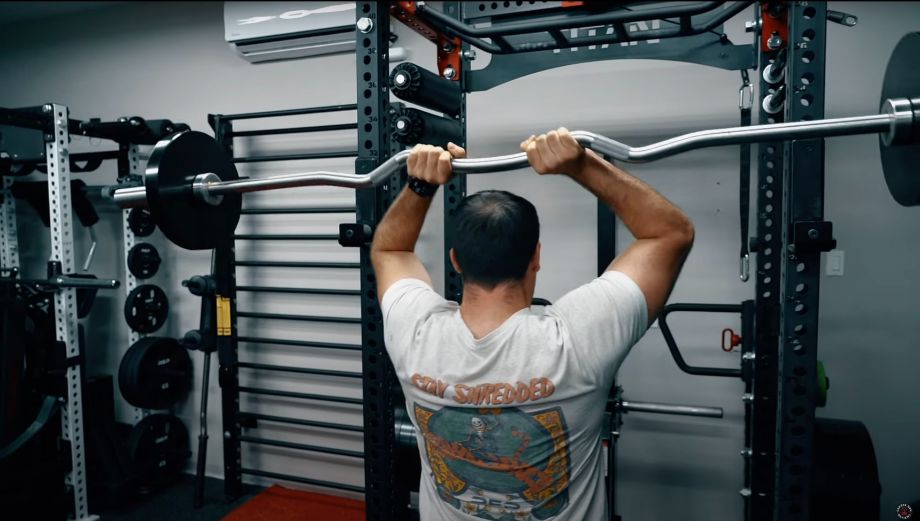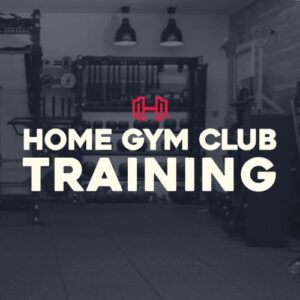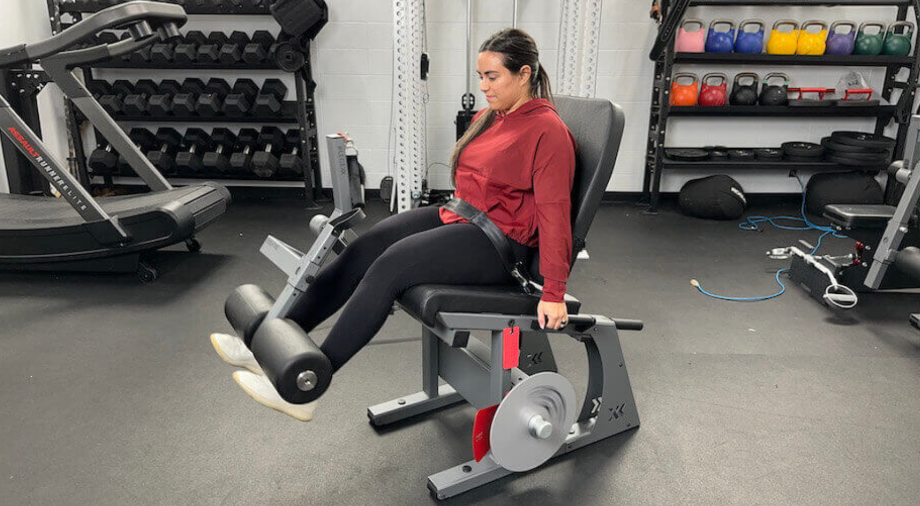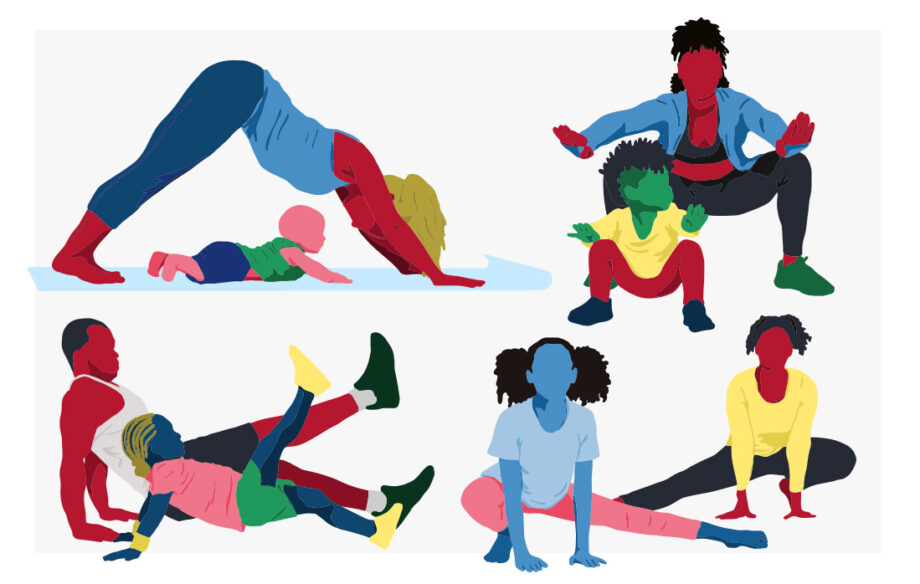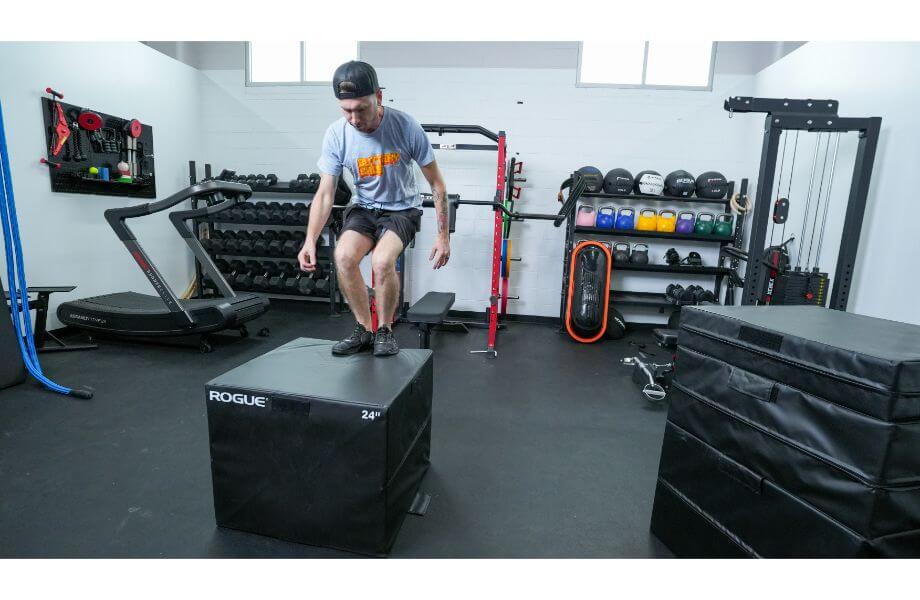Experienced lifters are well aware of the complementary relationship between the chest muscles and the triceps. That’s because many high and low chest workouts involve pushing, whether it’s your own bodyweight during a push-up, a barbell during the bench press, or any other form of resistance. You get activation in your chest, if you’re focusing on maintaining proper form, but you’re also going to bring in the nearby tricep muscles to accomplish the task.
That’s why pairing the chest and triceps together is such a common training split. It’s popular, intuitive, and, most importantly, effective.
We’ve put together one of the best chest and tricep workouts you’ll find anywhere, featuring a variety of exercises that will challenge both muscle groups and provide some serious pump in the process.
Are you up for the challenge?
Chest and Triceps Muscles Explained
To fully understand why this kind of split is so effective, it’s important to understand the anatomy of the chest and triceps muscles.
Your chest muscles include the pectoralis major, pectoralis minor, serratus anterior, and subclavius. According to StatPearls1, “these muscles are responsible for moving the upper extremities in a wide range of motion…[including] flexion, adduction, and internal rotation of the humerus, stabilization of the scapula, as well as elevating and depressing the bones of the thorax.”
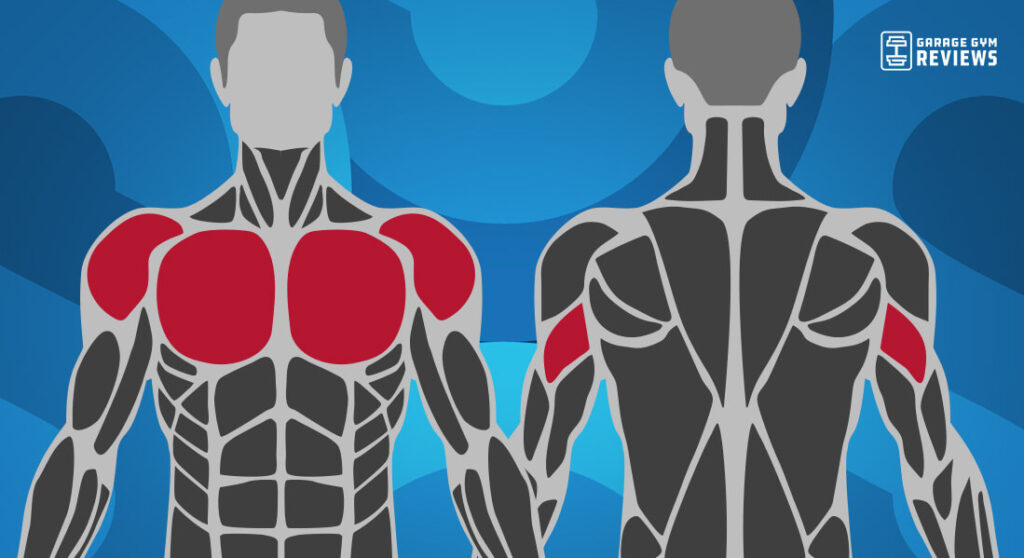
Move to the back of your upper arm and you’ll find the triceps brachii, which consists of three heads— the long head, lateral head, and medial head. Your triceps muscles are primarily responsible for extending your forearm at the elbow joint.
It is possible to isolate the triceps during exercises such as lying triceps extensions, tricep pushdowns, and standing triceps kickbacks. Compound exercises like push-ups and bench presses also hit the triceps.
I know what you’re thinking. Those are mostly referred to as chest exercises.
Exactly.
Because of the triceps’ role in pushing and pressing movements, you’ll get activation in the triceps brachii when working out your chest. To increase that activation, GGR Head of Content and certified personal trainer Kate Meier says a close grip bench press will further isolate the triceps, whereas a wider grip focuses more on the chest muscles.
Chest and Triceps Workout
Are you ready to end the biology lesson and get to the lifts?
We’re happy to oblige, but remember— always prioritize keeping good form over going heavier, listen to your body, rest if you need to, and fight for those last reps!
Part 1: Straight Set Near-Maximal Strength
Exercise: Neutral-grip barbell bench press
Primary mover: Pectoralis major, triceps brachii, anterior deltoids
Sets/reps and RPE: 5 sets of 5 reps. First working set 65-70% of 1-rep max; work up to 85% of 1RM
Rest interval: 90 to 120 seconds between sets
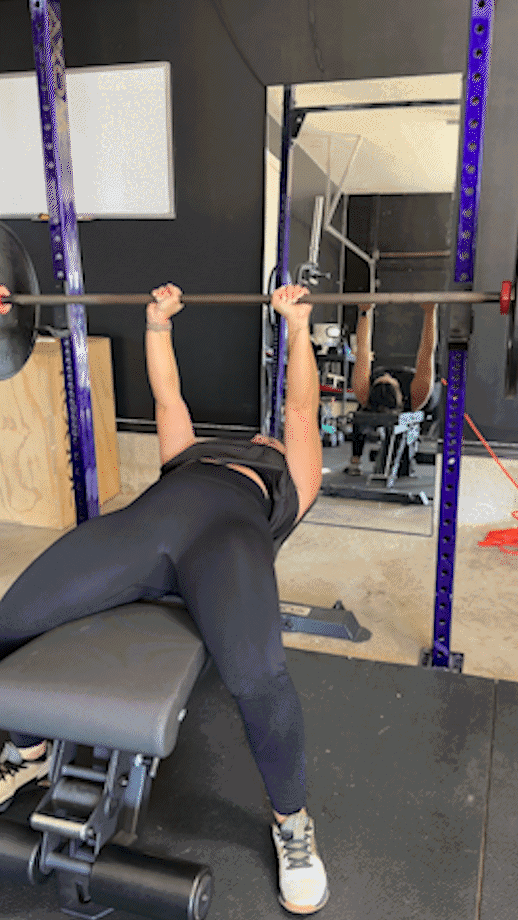
Part 2: Straight Set Hypertrophy
Exercise: Incline Dumbbell Press
Primary mover: Pectoralis major, triceps brachii, anterior deltoids
Sets/reps and RPE: 4 sets of 8 reps at 65-70% of 1-rep max
Rest interval: 90 to 120 seconds between sets
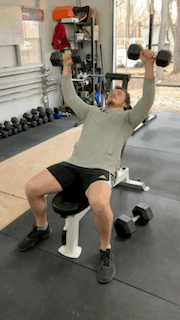
Part 3: Straight Set Hypertrophy
Exercise: Dumbbell pullovers
Primary mover: Pecs, lats, serratus anterior, and the long head of the triceps
Sets/reps and RPE: 4 sets of 8 reps at 65-70% of 1-rep max
Rest interval: 90 to 120 seconds between sets
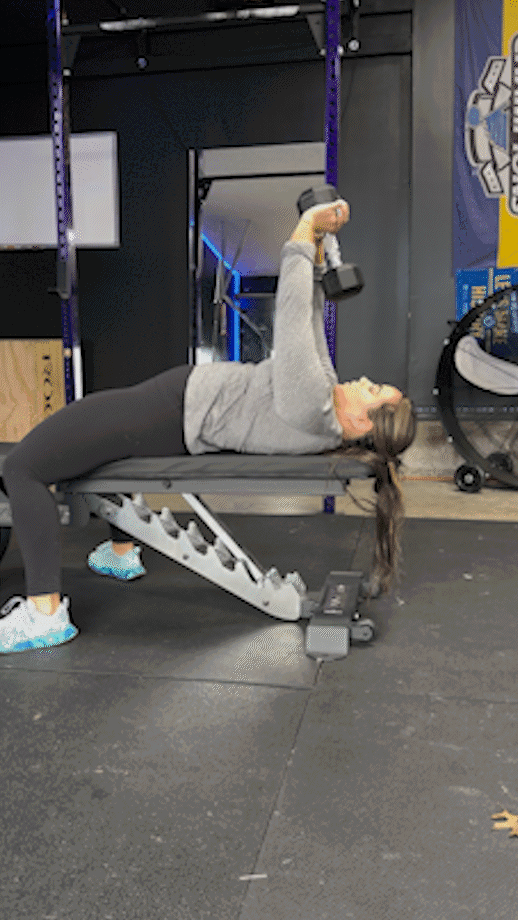
Part 4: Superset Strength
Exercise A: Dumbbell fly
Primary mover: Pecs, anterior deltoid, biceps brachii for flyes,
Exercise B: Dumbbell skull crushers
Primary mover: triceps brachii
Sets/reps and RPE: 5 sets of 5 reps. First working set 65-70% of 1-rep max; work up to 85% of 1RM
Rest interval: 90 to 120 seconds between sets
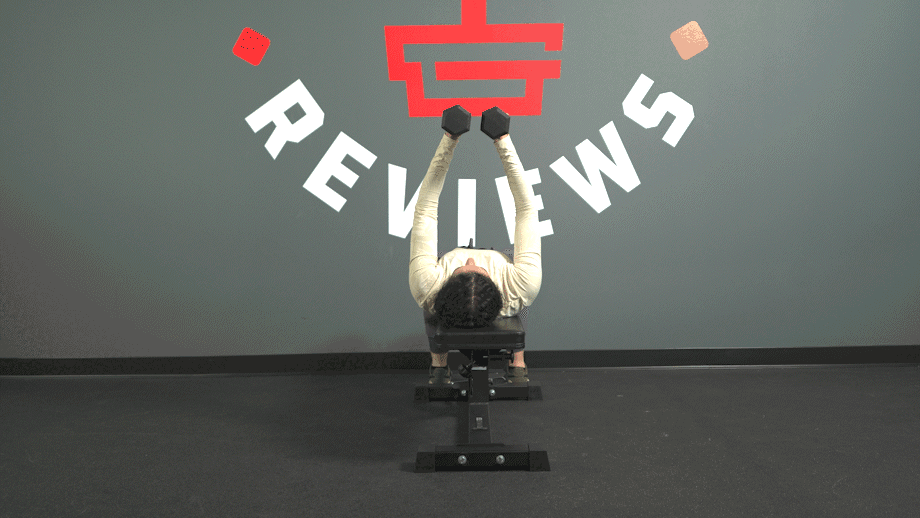
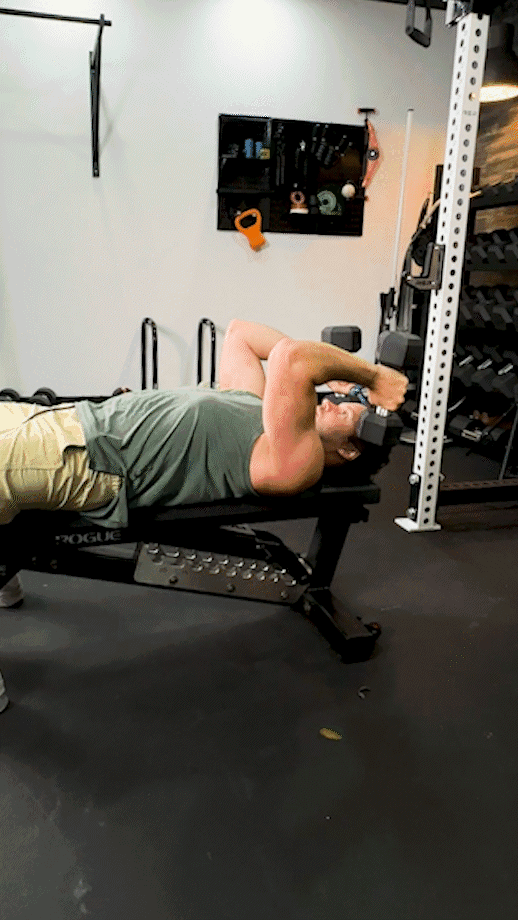
Part 5: Superset Hypertrophy
Exercise A: Push-up
Primary mover: Pectoralis major, triceps brachii, anterior deltoids
Exercise B: Tricep dips (stationary bars)
Primary mover: Pectoralis major, triceps brachii, anterior deltoids
Sets/reps and RPE: 3 sets of 10 reps at 65-70%
Rest interval: 90 to 120 seconds between sets
RELATED: What Muscles Do Push-Ups Work?
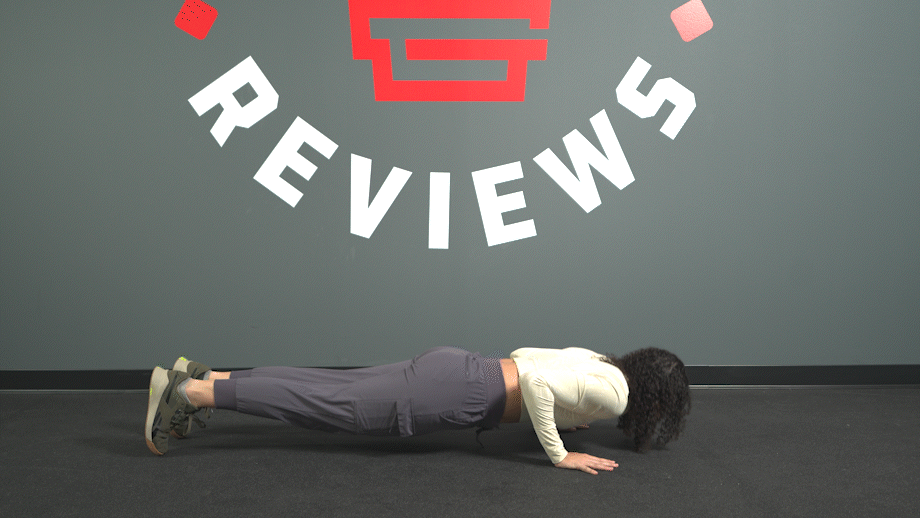
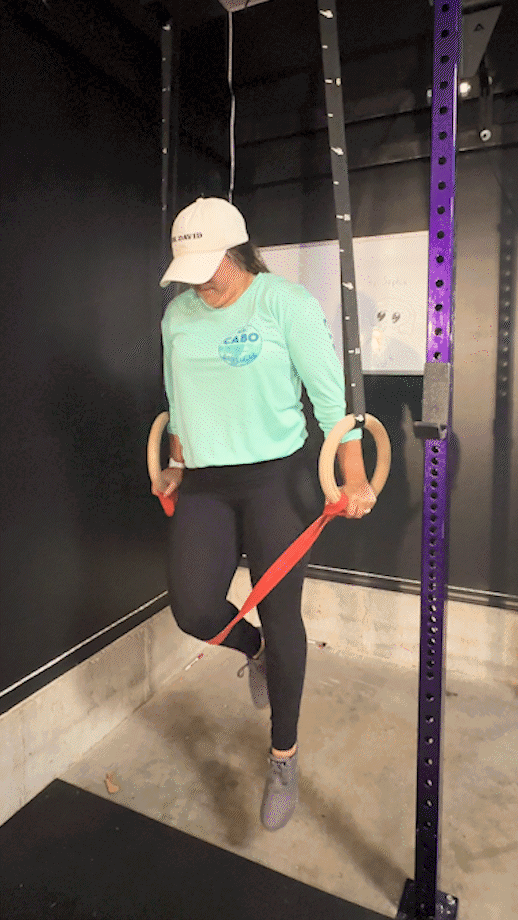
Why You Should Work Chest and Triceps Together
We’ve already discussed how the chest and tris tend to work together to perform pushing motions, making them what is called a synergistic pair.
That’s why it’s no surprise to find that a 2017 review published in PLoS One3 observed similar EMG activity of the pectoralis major and triceps brachii during the bench press exercise, significantly more than the also-involved anterior deltoid.
Similarly, a 2017 study published in Muscle & Nerve4 monitored the recovery of the chest and tris after a rigorous training program involving eight sets of the bench press, noting that both muscle groups were once again capable of peak torque approximately two days after training.
The study stated that “the small and nonsignificant difference between the recovery of [triceps brachii] and [pectoralis major] muscles…suggest that bench press exercise may promote a similar stress on these muscles.”
RELATED: Best Weight Bench For Home Gyms
Because of how these muscles assist us in completing specific motions, they work together on exercises that require pushing, pressing, and extending the elbow to straighten our arms.
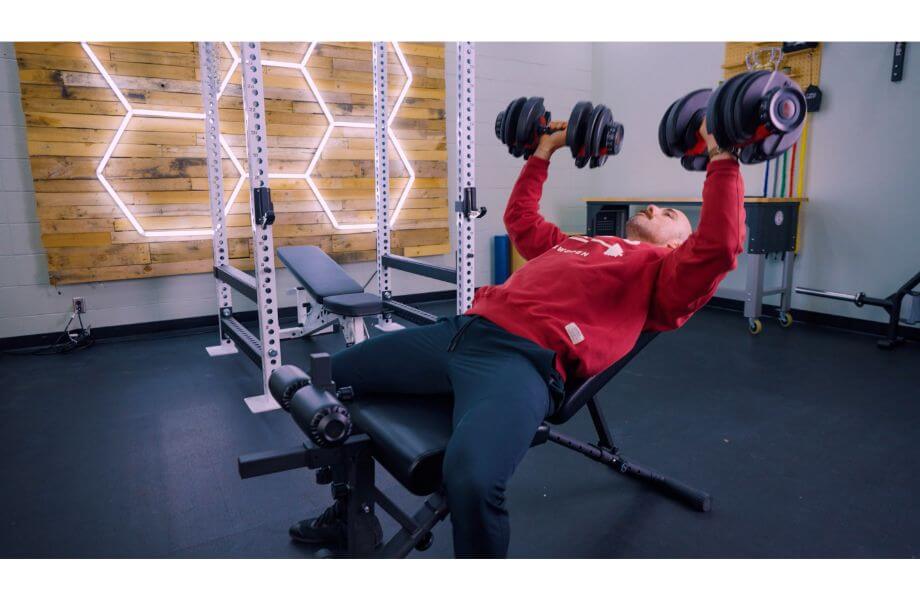
A 2018 study published in Exercise and Sports Sciences Reviews5 discussed the effect of synergistic muscle pairs further. It determined that, to summarize, the lateral connections distribute stress among the muscles and therefore minimize peak stress on any one location.
In other words, as Kate explains, “Synergistic muscle pairs work together to complete a task or movement efficiently, so you’re not overburdening either muscle group in the process.” You get enough activation to inspire strength gains and muscle growth, but not too much that you’ll cause or contribute to an injury.
Therefore, working out your chest and triceps together is an intuitive choice that provides balance to your upper body, ensuring even gains without strength or size imbalances.
Besides, most chest exercises recruit the triceps anyway, so you might as well hit both and get the most impact out of your time! Work smarter, not harder!
How Often to Work Chest and Triceps
Even if you’re eager to build the big upper chest of a bodybuilder and massive triceps to boot, fitness is about working out the full body, not just a few select muscle groups.
Plus, if you’re really challenging yourself and following the principles of progressive overload, your muscles will need time to recover in between training sessions.
According to Muscle & Nerve4, researchers observed a recovery of the pectoralis major and triceps brachii forty-eight hours after training. Given this, we recommend working out your chest and triceps every third day, and be sure to get a comprehensive warm-up before really diving into your working sets.
In the meantime, you can do cardio, perform other training splits like back and biceps, or bite the bullet and finally have a dedicated leg day like you swore you’d start working into your workout routine so many times before.
RELATED: Best Bicep Workout
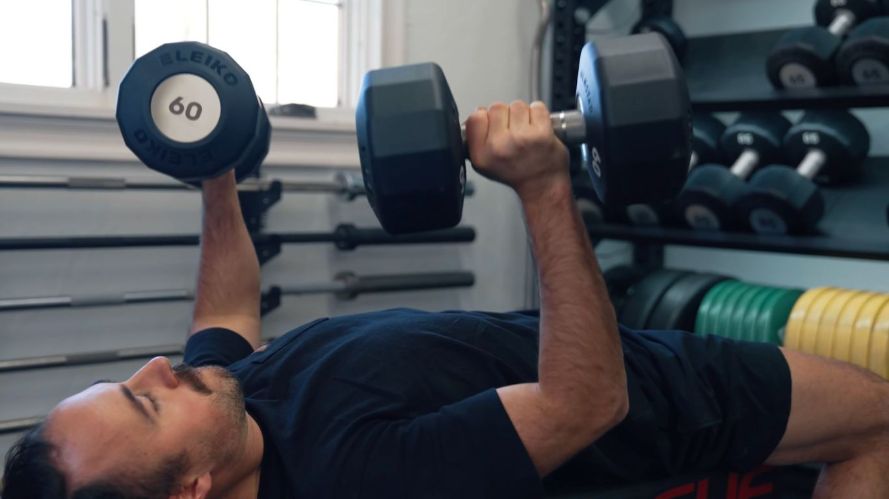
You also could pencil in an actual rest day, in which you pamper yourself, relax, and perform activities that support muscle recovery. The best muscle recovery supplements may also aid in post-exercise recovery as well.
Studies show6 foam rolling helps reduce muscle soreness and improve range of motion, so that could be a good thing to do instead. A little light yoga and/or mobility exercises might help too.
After giving your muscles some much-needed rest to recover, you may resume targeting them to continue your quest towards more muscle mass and greater strength.
RELATED: How to Speed Up Muscle Strain Recovery
FAQs: Chest and Tricep Workout
Is it good to train chest and triceps together?
Many of the compound movements featured in a chest workout will provide activation to the triceps anyway, so it’s highly intuitive to tack a few additional triceps exercises into the programming to really make the most of your time.
That’s why a chest and triceps split is so popular; because it’s intuitive, efficient, and effective.
Is 3 exercises for the chest enough?
Whether or not three exercises will cut it depends on your current fitness abilities, the exercises themselves, and the level of challenge the exercises pose.
For example, a few reps of the chest fly, dumbbell chest press, and push-ups might be sufficient for a beginner, but a competitive athlete might call that a warm-up.
RELATED: Dumbbell Chest Workout
Then again, three exercises could be sufficient if you really challenge yourself and prioritize proper form. We’re talking heavy dumbbell bench presses, incline bench, push-ups to muscle failure– really going for it!
Most importantly, listen to your body. If you’re getting through those three exercises and still feel fresh and ready to go, tack on one or two more and check in again. If you’re feeling spent after three, call it right there.
When in doubt, consult a qualified CPT or other fitness professional for personalized advice.
RELATED: How Many Reps To Build Muscle
How many exercises should I do on chest and triceps day?
Our workout above includes seven great exercises for the chest and triceps, as well as a structure that will really maximize the impact of them.
Beginners may scale or modify the workout by reducing the number of exercises, lowering the number of reps, or choosing to go light with the weights. Athletes and other elite fitness enthusiasts, on the other hand, might need to tack on a few additional exercises to get even more work done.
Overall, the total number of exercises will depend on your current fitness abilities and goals. Listen to your body and, when in doubt, consult a personal trainer.
How do you structure a chest and tricep workout?
most pushing exercises that focus on your chest also incorporate your triceps. That said, most folks prefer to start with compound exercises at near-maximal effort and move to isolation exercises with more volume after that (you can think of this as working the big muscles first, followed by smaller muscle groups). Try our chest and tricep workout to get the hang of structuring your upper body workouts.
References
1. Baig MA, Bordoni B. Anatomy, Shoulder and Upper Limb, Pectoral Muscles. [Updated 2022 Aug 30]. In: StatPearls [Internet]. Treasure Island (FL): StatPearls Publishing; 2023 Jan
2. Stastny P, Gołaś A, Blazek D, et al. A systematic review of surface electromyography analyses of the bench press movement task. PLoS One. 2017;12(2):e0171632. Published 2017 Feb 7. doi:10.1371/journal.pone.0171632
3. Ferreira DV, Gentil P, Soares SRS, Bottaro M. Recovery of pectoralis major and triceps brachii after bench press exercise. Muscle Nerve. 2017;56(5):963-967. doi:10.1002/mus.25541
4. Maas H, Finni T. Mechanical Coupling Between Muscle-Tendon Units Reduces Peak Stresses. Exerc Sport Sci Rev. 2018;46(1):26-33. doi:10.1249/JES.0000000000000132
5. Macdonald GZ, Button DC, Drinkwater EJ, Behm DG. Foam rolling as a recovery tool after an intense bout of physical activity. Med Sci Sports Exerc. 2014;46(1):131-142. doi:10.1249/MSS.0b013e3182a123db


